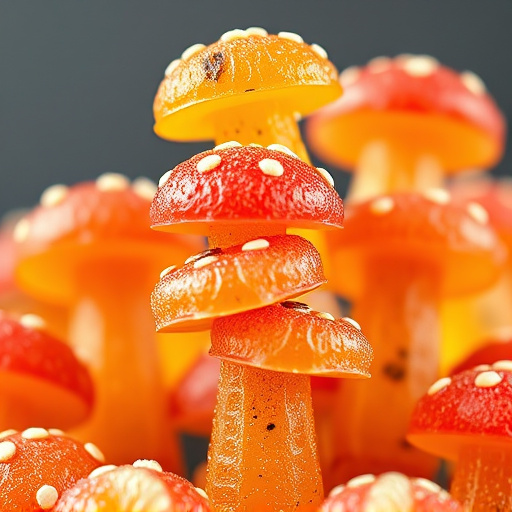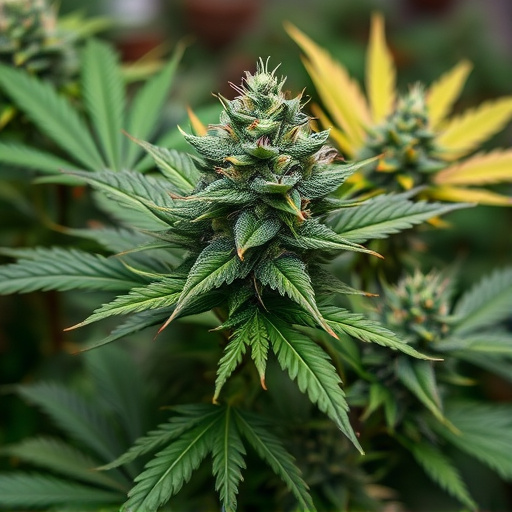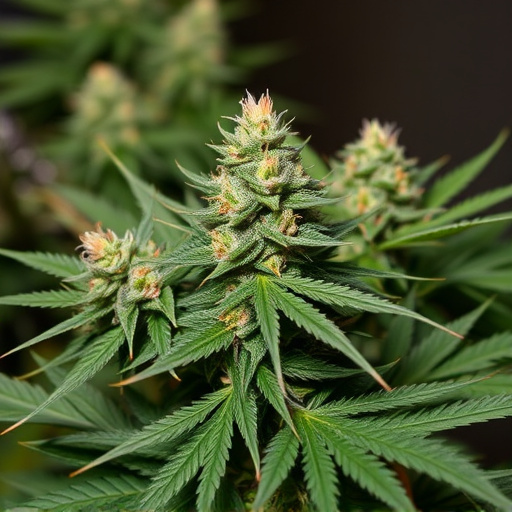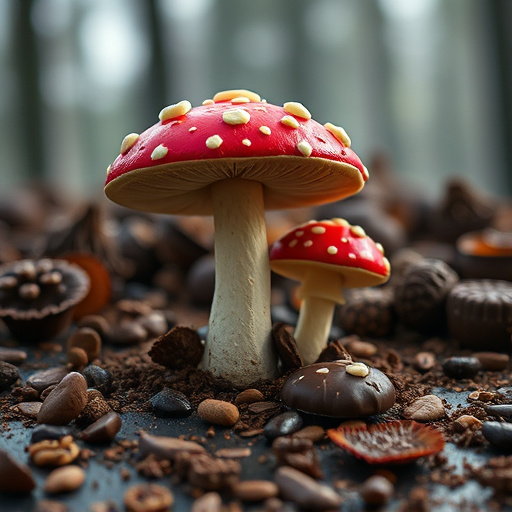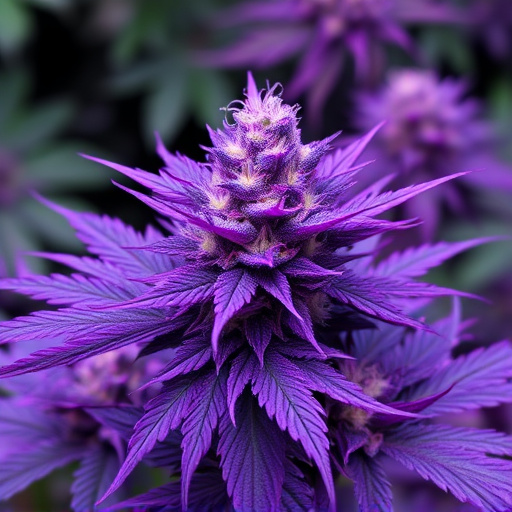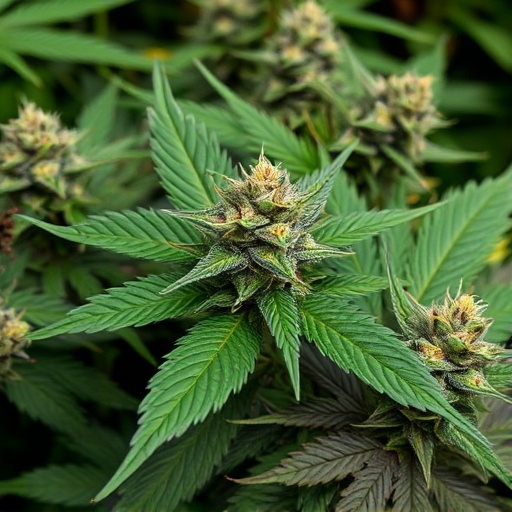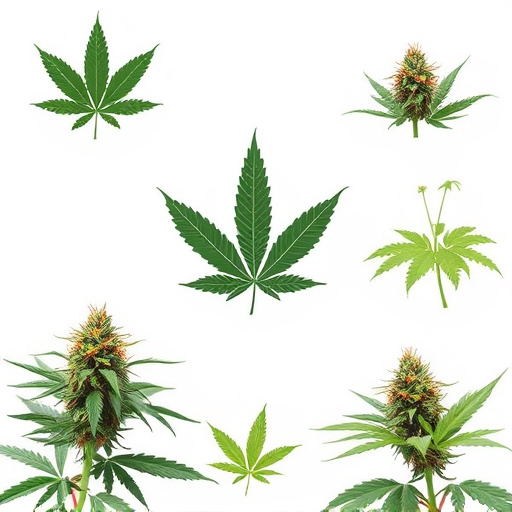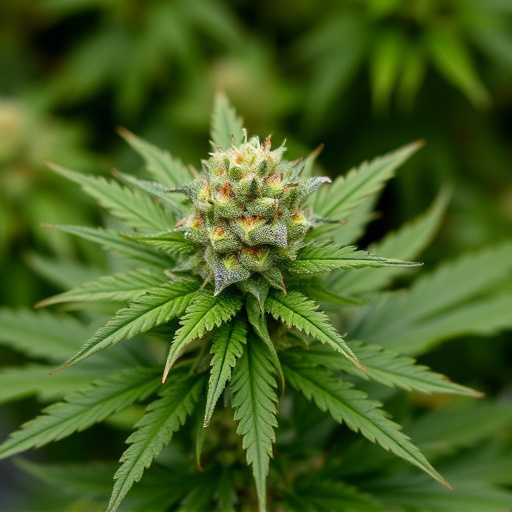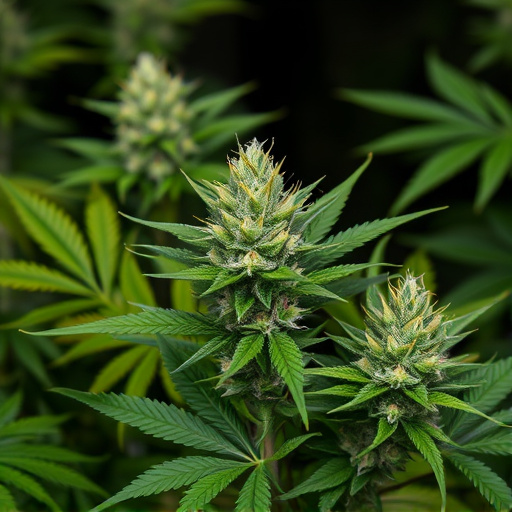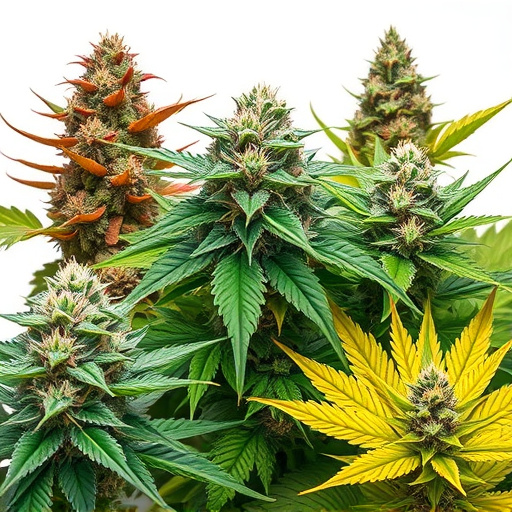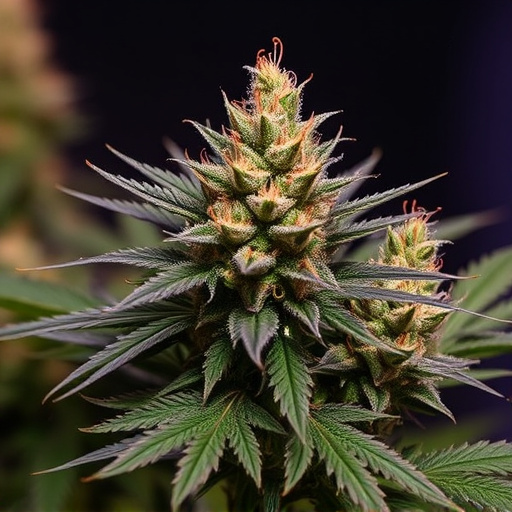Medical marijuana strains' unique scents arise from complex terpene-cannabinoid interactions, with terpenes like myrcene and limonene influencing aroma, sensory experience, and potential therapeutic effects. Growing conditions and genetic factors significantly shape these aromatic compounds, leading to diverse profiles that enhance user experiences and drive medical research into cannabis benefits.
Unraveling the enigmatic aroma of cannabis is a captivating journey into its chemical composition and environmental origins. This article explores the multifaceted factors that determine cannabis scent, delving into the pivotal roles of terpenes and various compounds. We examine how environmental conditions play a crucial part in shaping these aromas and uncover the genetic differences among medical marijuana strains, providing a unique perspective on their aromatic profiles. Discover the science behind the scents that make each strain distinct.
- The Role of Terpenes and Compounds in Cannabis Scent
- Environmental Factors Influencing Aroma Development
- Genetic Differences Among Medical Marijuana Strains: An Aromatic Perspective
The Role of Terpenes and Compounds in Cannabis Scent
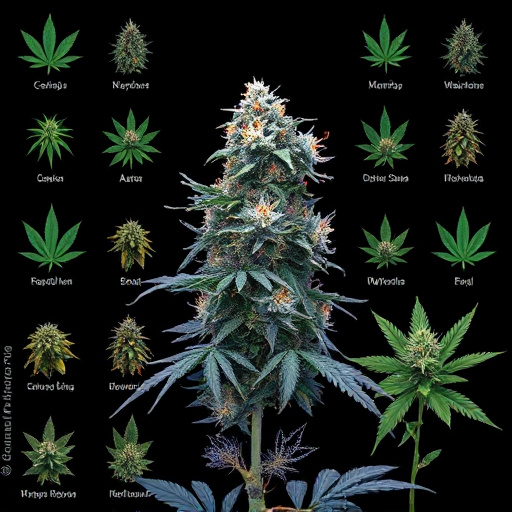
The distinctive aroma of cannabis is a complex interplay between various terpenes and compounds present in the plant. Terpenes, organic volatile compounds, are responsible for the diverse scents we associate with different medical marijuana strains. These aromatic molecules not only contribute to the pleasant or pungent odors but also play a crucial role in the plant’s biological functions. Each terpene offers unique properties, influencing both the sensory experience and potential therapeutic effects. For instance, myrcene is known for its earthy and musky notes, often found in indica strains, while limonene provides a citrusy aroma commonly detected in sativa varieties.
The combination and concentration of terpenes, alongside various cannabinoids like THC and CBD, create the unique olfactory profile of each cannabis strain. This intricate relationship between compounds significantly impacts the overall user experience. Researchers are increasingly recognizing the potential benefits of these natural chemicals, leading to a deeper exploration of how terpene-cannabinoid interactions contribute to the therapeutic effects sought in medical marijuana strains.
Environmental Factors Influencing Aroma Development
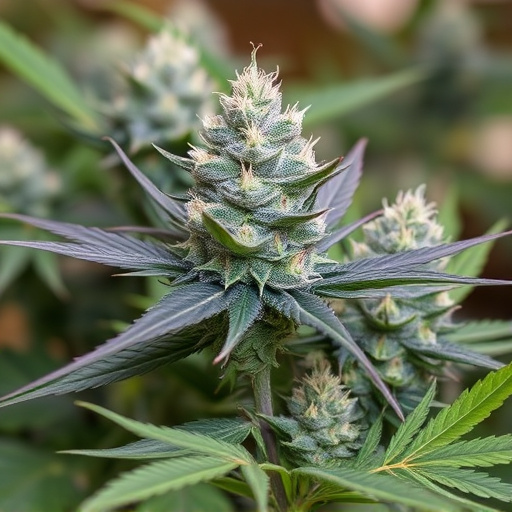
The development of cannabis aroma is a complex process influenced by various factors, and environmental conditions play a significant role in shaping the final scent of medical marijuana strains. During growth, plants are sensitive to their surroundings, including temperature, humidity, and light exposure. These elements can impact the synthesis of volatile compounds responsible for the distinctive aromas we associate with different cannabis varieties.
For instance, warmer temperatures can accelerate the production of terpenes—organic compounds that contribute to both flavor and fragrance in cannabis. Humidity levels also matter; optimal moisture content supports the growth of diverse terpenes, resulting in more complex and varied scents. Additionally, light intensity and duration influence the plant’s metabolic pathways, potentially altering the terpene profile and, consequently, the aroma of medical marijuana strains.
Genetic Differences Among Medical Marijuana Strains: An Aromatic Perspective
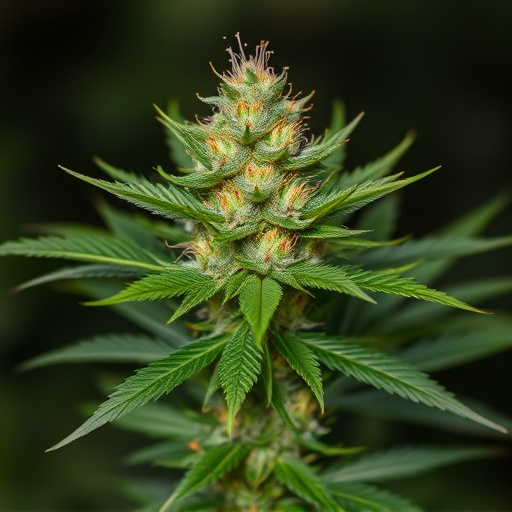
Genetic differences among medical marijuana strains play a pivotal role in shaping their unique aromas. Each strain boasts its own distinct chemical composition, primarily determined by its genetic makeup. These genetic variations lead to diverse terpene profiles, which are responsible for the characteristic scents and flavors associated with different strains. For instance, some strains may produce higher levels of myrcene, known for its earthy and musky notes, while others might have elevated amounts of limonene, contributing to citrusy aromas.
Understanding these genetic differences is essential for patients seeking specific therapeutic effects. Different terpenes are believed to interact with the body’s endocannabinoid system in various ways, influencing the overall sensory experience and potential health benefits. As such, medical marijuana patients can choose strains tailored to their preferences and needs, ensuring a more personalized and effective treatment approach.
The distinctive aroma of cannabis is a complex interplay of terpenes, aromatic compounds, and environmental conditions. Terpenes, often referred to as the “essential oils” of cannabis, play a pivotal role in shaping the scent profile of different medical marijuana strains. These volatile compounds not only contribute to the unique odor but also offer potential therapeutic benefits. Environmental factors, such as growing conditions and curing processes, further refine the aroma development, ensuring each strain possesses its own distinct character. Understanding these elements is key to appreciating the intricate world of cannabis aromas and unlocking the full potential of medical marijuana strains.


